.jpg)
CUPRA Formentor Review
.jpg)
Introduction
Your first question might be: “What on earth is a Cupra?”
Well, as we said, it’s sort of a Seat. You may recall the Cupra versions of older Seats. The Cupra badge was tagged on to the automaker’s high-performance models – a bit like BMW with its M-badged cars, or Mercedes-Benz with those coveted AMG badges on its high-powered models.
But a trend is emerging where high-performance models carry no ‘parent’ branding at all to separate them from their humble (and often less attractive) origins. So, like Renault has Alpine cars without any Renault badges on them, Seat now has Cupra without any Seat badges.
Select's rating score* - 4.1 / 5
At a Glance
Strictly speaking, the Formentor shares bits of the Seat Ateca. But there’s already a Cupra Ateca, too – and the Formentor is markedly different. So, Seat is adamant that the Formentor is Cupra’s first non-Seat car.
Okay, we admit that is still very confusing. But hopefully, you've at least got your head around the principle of the Cupra brand so that we can carry on and admire the beastliness of this coupe-styled SUV.
Right then, what’s the best word to describe the Formentor? “Modest”? You’re having a laugh. From the front, it’s imposing, with an aggressive and sporty look, making you think it’s ready to gobble up little hatchbacks for breakfast.

The front has a pointed grille with mean-looking headlights. Just one glance is enough to let you know this car doesn't have a soft personality. The roofline curves downwards towards the rear, neatly meeting a spoiler that overhangs the rear window. At the back, it has cool LED lights spanning the width of the boot, a diffuser effect underneath, and a contrasting panel colour behind the number plate and down the sides, which compliments the main body colour nicely.
Even the alloy wheels look like they could easily defeat a precious metal if you attached them to a lathe. And, of course, no performance car is complete without quad exhaust pipes at the rear – and the Formentor happily obliges.
The name ‘Formentor’ seems as though it could easily have been picked by Lamborghini, rhyming with ‘tormentor’ and sounding like it means business. The rhyme is likely a coincidence, though, as it's named after a region of Mallorca and roughly translates as ‘bread-making wheat’.
Let’s hope the car isn’t as much of an anti-climax.
Key Features
There are four main trims to choose from. There is the entry-level V1, which includes 18-inch wheels, a 12-inch touchscreen, SatNav, LED headlights and taillights, dynamic headlight range, a digital instrument display, and three-zone air conditioning. You also get voice control, Apple CarPlay/Android Auto, four USB-C ports, DAB radio, lumbar support seats, adaptive cruise control, an electronic parking brake, a start-stop system with regenerative braking, keyless start, a driver alert system and dynamic road sign displays.
That sounds like a lengthy and expensive options list, but you heard right – that’s all included. As standard. At entry-level. Impressive stuff.
The V2 adds in 19-inch wheels, wraparound interior lighting, leather seats, including a Winter Pack – which gives you electric and heated seats in the front, plus heated electronic folding door mirrors – a rear-view camera and collision warning braking.
Next up is the VZ2. This adds in dynamic chassis control, sports bumpers, an electric tailgate, Cupra sport pedals, a heated steering wheel and sports suspension with front shock absorption. Other kit includes speed-sensitive power steering, Exit Assist, Lane Change Assist and Emergency Assist, which Cupra describes as providing ‘semi-autonomous vehicle control in an emergency’.
The range-topping VZ3 slaps Brembo brakes on top.
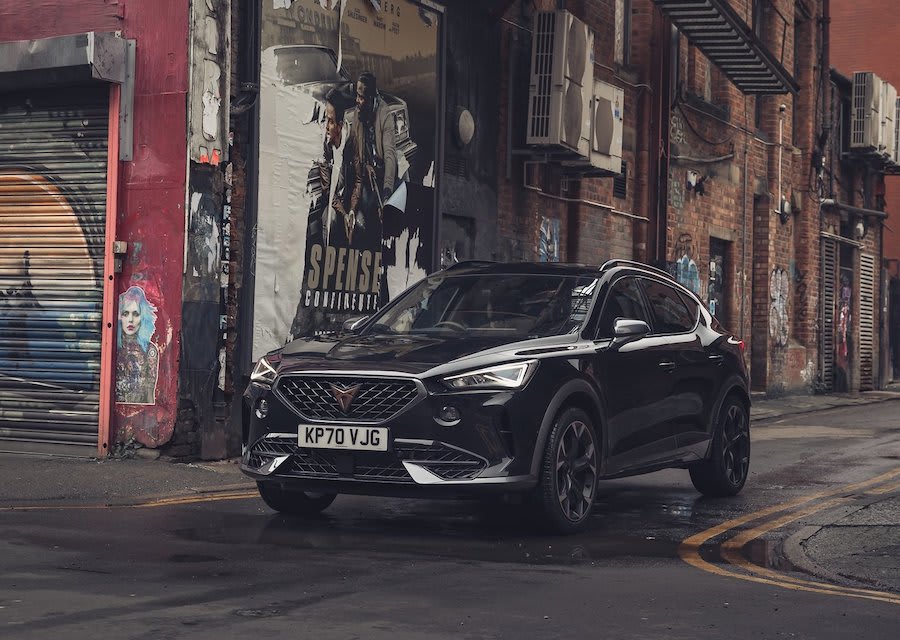
In anybody’s book, that’s a hell of a lot of gear without needing to touch an options list.
In terms of engines, there are two turbocharged petrol units to choose from. A 1.5-litre, which kicks out 150PS, and a 2.0-litre lump, which is available with 190 or 310PS.
Nearly all models come with a seven-speed automatic DSG gearbox, although a six-speed manual is available with the entry-level 1.5-litre engine on the V1 and V2 trims.
The V1 and V2 are available in two-wheel drive with the 1.5-litre 150PS engine, while the 2.0-litre 190PS powerplant is a four-wheel drive. The VZ2 and VZ3 are both four-wheel drive with the 2.0-litre 310PS engine.
There is a plug-in hybrid version, too. This model blends an electric motor with a 1.4-litre petrol engine to deliver 204PS in the V1 and V2 trims and 245PS in the VZ2 grade - both with a six-speed automatic ‘box.
We tested the V2 trim with two-wheel drive, the 1.5-litre 150PS engine and the seven-speed automatic DSG gearbox.
Performance & Drive
When driving normally, the steering in the Formentor feels very light but responsive. And, impressively, for an SUV, there is hardly any lean in the corners even at higher speeds, with tons of grip, too. The DSG gearbox changes very quickly, although we found it made the car a little bit jerky moving around town.
When you get out of the urban jungle, though, and start to push the Formentor, it packs a punch and moves well, feeling very stable and giving you the confidence to get the most out of its performance. The acceleration is impressive, and it handles pleasingly.
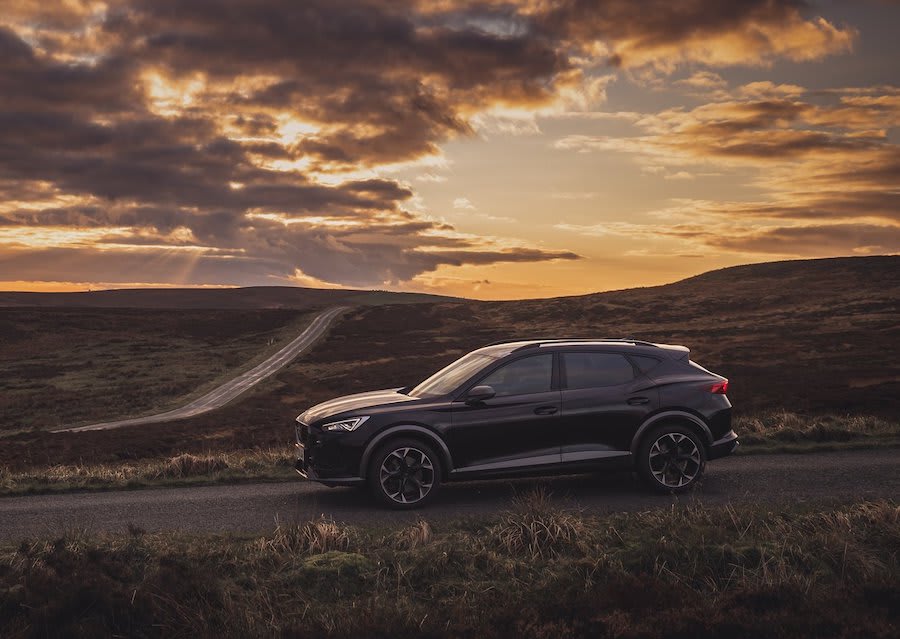
The engine sounds refined, although this is still just a 1.5-litre engine, so don't buy one on the assumption that it’ll growl like a V8, even if you go for the bigger 310PS engine.
It certainly doesn’t feel like an SUV to drive, and, given most people regard SUVs as having a higher driving position, it doesn't feel like you're that much higher up than in any regular car. This is partly due to the depth of the sports bucket seats.
The sweeping windscreen angle gives you a good view of the road, too.
Despite the 19-inch wheels, the Formentor doesn’t feel uncomfortable, even though our V2 model doesn’t include the adaptive dampers found on the VZ-level trims.
We are always going on about handling versus ride comfort because, generally speaking, the stiffer the suspension is, the better and sportier the handling is, but the more your back hurts afterwards.
However, the adaptive dampers in the VZ2 and VZ3 are a real ace up the Formentor’s sleeve. You can put it into a driving mode called ‘Individual’ and adjust settings, including the suspension stiffness, in the infotainment system. This effectively means you can choose your own level of driving comfort.
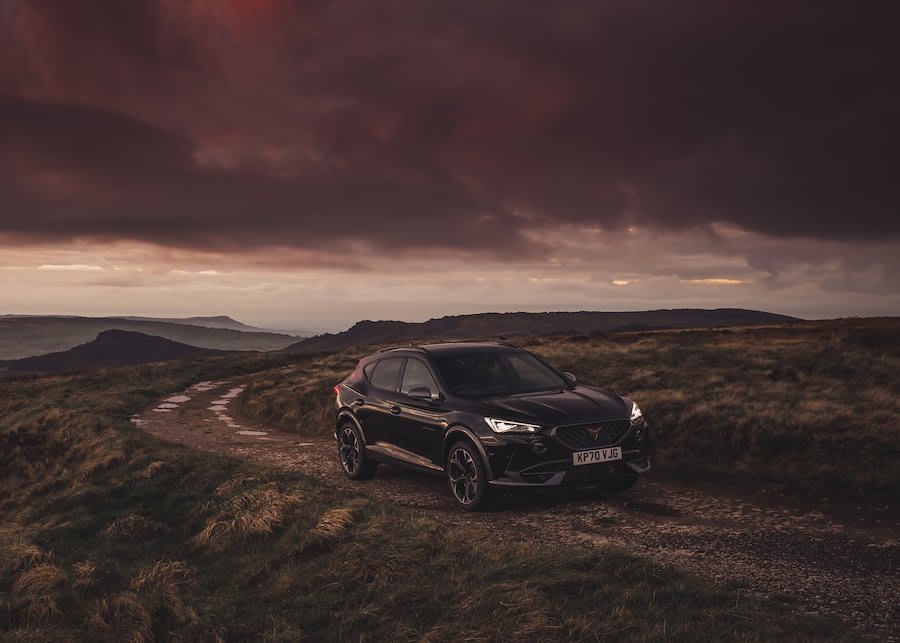
You can select presets, too, with Comfort, Normal and Sport – and a fourth preset called Cupra, which is the most extreme. These tweak just about every aspect of the driving experience. For example, as you crank it further up, the system quickens the accelerator response and increases the heaviness of the steering. It also stiffens up the suspension. To add icing to the cake, there's another driving mode, too – Off-Road – which sets the car’s suspension, stability system and transmission appropriately, even throwing hill-descent control into the mix.
It is a great feature but, sadly, you have to make do without it on the lower-spec cars, including our test car.
Running Costs & Emissions
The 1.5-litre engine produces 143g/km of CO2 with the manual gearbox, but this goes up to 151g/km with the DSG automatic ‘box, and it manages 0-62mph in just under nine seconds.
The fuel economy is between 41 and 45mpg, although if you choose the top-of-the-range 310PS engine, this figure drops to about 32mpg. You can expect slightly lower than that in the real world - and higher road tax, as it produces CO2 at a rate of 193g/km. The 0-62mph figure drops to under five seconds, though.
The plug-in hybrids claim 188mpg and 33g/km CO2 for the higher-powered version, and 235mpg and 27g/km CO2 for the lower-powered car. What's more, you can make shorter journeys of up to about 35 miles on all-electric power if you want to (and if you have enough charge, of course).
Furthermore, while the origins of the Cupra (as a sort-of-Seat) are Spanish, its DNA is more of a Volkswagen, and the German engineering that dominates it should ensure good reliability.

Interior & Technology
The interior is well thought out and a lovely place to be.
The infotainment touchscreen looks vast, and it's the same size throughout the range, with a nicely designed system that is responsive, if not class-leading.
Nearly everything, though, is operated through the touchscreen – and there are not really any buttons or even the traditional knob on the centre console to control it. Instead, the only switches are touch-sensitive sliders that seem funky but are less intuitive to operate when on the move. The sliders also don’t appear to light up, so they’re difficult to see in the dark.
The digital instrument display looks cool and provides different layouts depending on your preference. Higher-end models enable you to select which driving mode you want from the steering wheel - a feature rarely seen on vehicles that aren’t supercars.
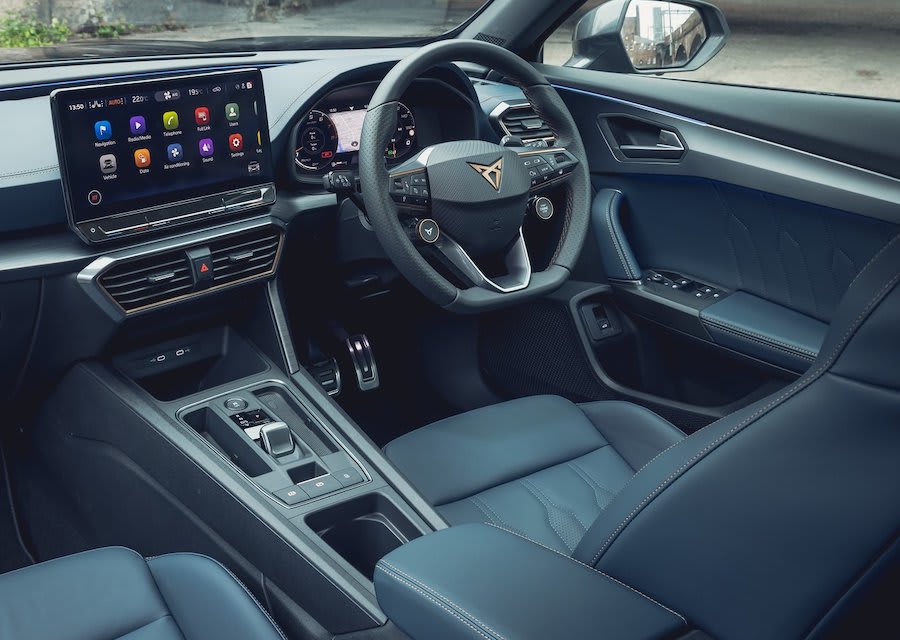
The dashboard has quite an attractive two-tiered arrangement, and even the air vents are the same shape as the grille on the front of the car.
The steering wheel adjusts manually, and the bucket seats, although impressive and comfortable, do sit you reasonably low down, so this SUV is no good for those who want to laud it over other motorists.
There are two cupholders in the centre console, the door bins are relatively spacious, and the car comes with a decent-sized glove box.
The gear lever is more of a small switch in our automatic, meaning there's room for a dedicated place on the centre console to fit your key. You will also find a pad to charge your phone wirelessly.
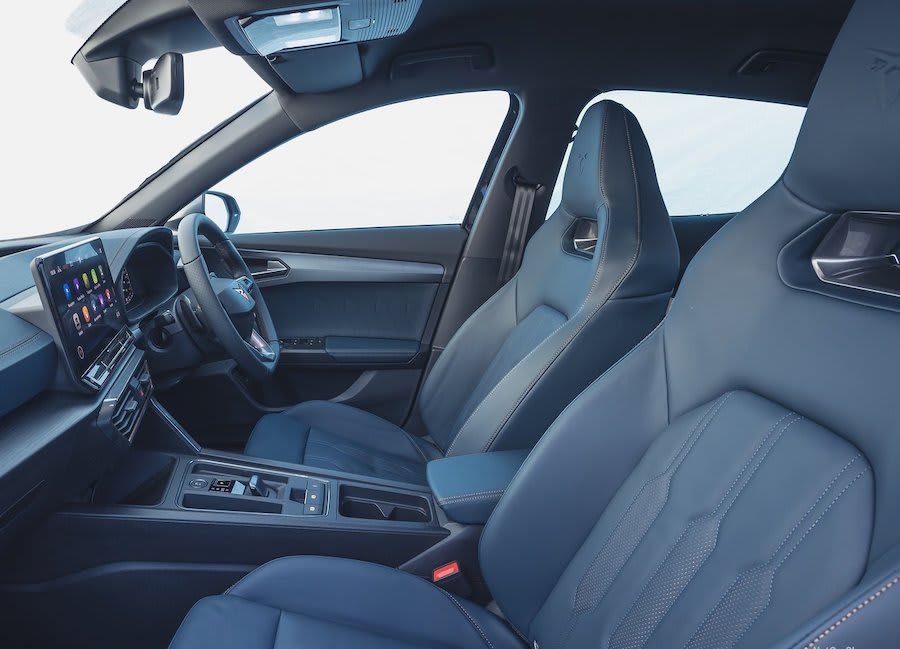
Practicality & Boot Space
There is a satisfactory amount of room in the front, and there's lots of space in the back. This will please taller passengers, especially as there’s a decent amount of headroom - despite the sloping roofline.
The middle seat folds down to create an armrest, and there's climate control in the back.
The boot capacity in our two-wheel drive test model is 450-litres, although this reduces to 420-litres in the four-wheel drive versions and even more on the hybrid variants.
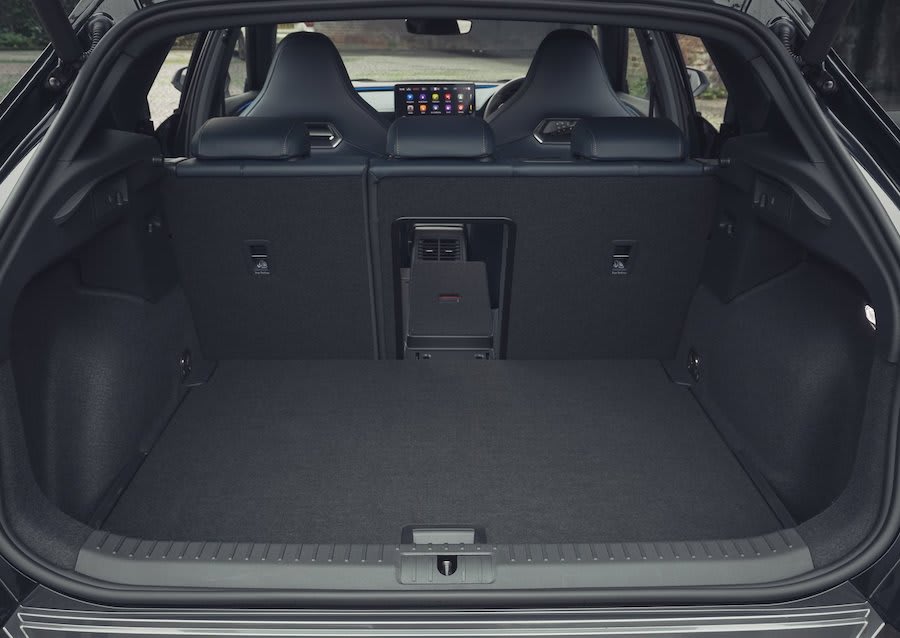
By comparison, the Volkswagen T-Roc has 445-litres, the BMW X2 measures up with 470-litres, and the Mercedes GLA has the biggest at 495-litres.
Nevertheless, even the reduced 420-litre capacity should be more than adequate for even the largest shopping trips.
To get the rear seats down, you pull a handle on each side of the boot, and they fold reasonably flat by themselves in a 60:40 configuration.
The boot is a good shape with lots of storage space. Hooks and tie-down points are included, with a space-saver wheel under the floor.
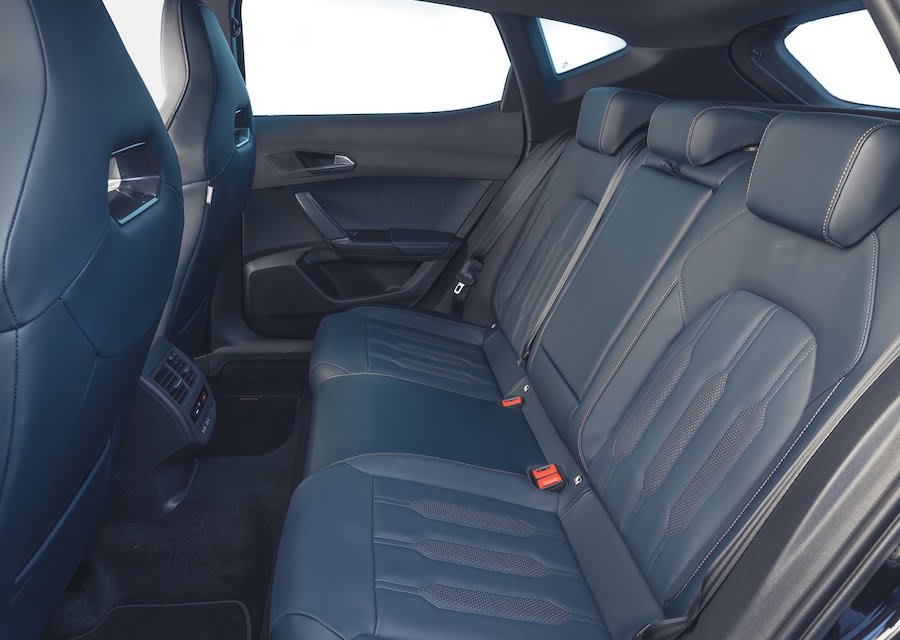
Safety
With so much technology on board, it’s no surprise that the Formentor achieved a five-star rating from Euro NCAP.
It scored 93% for adult occupants, 88% for child occupants and 80% for safety assists.
It has automatic high-beam assist, so you don't blind oncoming road users, collision warnings with automatic braking, lane-keep assist and a driver alerting system.
The blind-spot monitoring consists of strips of LED lights on the door, which flash to warn you if you're risking pulling out into the path of something in your blind spot.
The VZ2 and VZ3 Formentors can stop themselves in emergencies, and this safety system can be added to the V1 and V2 trims as an optional extra.
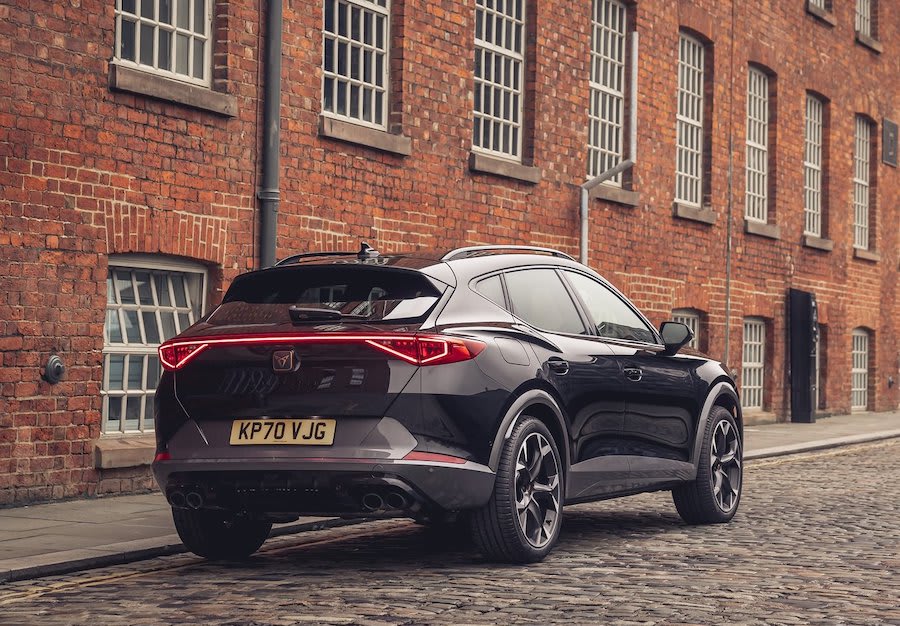
Options
With so much offered as standard, it’s a wonder there’s an options list offered at all. It is certainly a modest one, but there are elements that can be added.
One thing we don't like is manufacturers who insist you have your car in a specific colour unless you're willing to pay extra, and, sadly, Cupra is guilty here.
The car is a solid white colour as standard. But the four metallic shades – black, dark blue, dark grey and white – are an option.
There is then something called ‘Premium Metallic’ - available in red, a lighter grey and a very dark grey, which almost looks black - that’s weirdly called ‘F14’.
Or, if you're insane, you can have a matte finish in dark grey or dark blue for a lot extra.
Cupra has thrown in so much as standard that we can forgive this, and, in fairness, it's common for metallic and matte paints to cost more. But the fact there's not a selection of non-metallic colours is disappointing and frustrating, given just how many positives there are with the Formentor.
There is also no choice of alloys unless you opt for the entry-level V1 trim, in which case the option doubles to two designs. But they're both 18-inch rims, so you can't upgrade to the 19-inch wheels found everywhere else in the range.
A panoramic sunroof is available for a cost, and you can add an electric tailgate on the V1 and V2 (it’s already included on the other trims) and a Beats sound system.
Choosing the sound system will mean you lose the space-saver wheel in the boot, though.
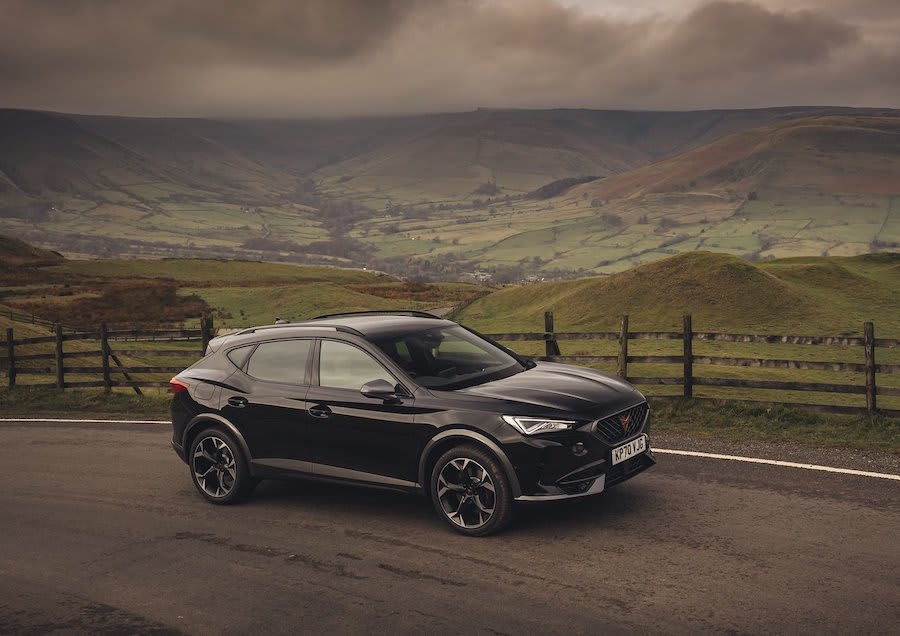
Rival Cars
As we covered in our practicality comparison above, the Volkswagen T-Roc, BMW X2 and Mercedes GLA are alternative motors you might want to consider.
The entry-level BMW and Mercedes-Benz are both in a similar price bracket to the V2 Formentor we’ve tested.
As expected, the BMW and Mercedes are naturally more refined, but the sheer excitement of the Formentor makes it a worthy contender. It is also worth bearing in mind that, such is the popularity of the German premium brands, the Formentor is likely to be more exclusive, too.
But, the VW T-Roc is probably a better fit for those that aren’t so bothered about the performance-dominated characteristics of the Cupra.
Verdict & Next Steps
Dropping the Seat name and launching Cupra as a marque in its own right looks like it’s going to be a masterstroke by Seat.
Although Seats are excellent cars – the brand is owned by Volkswagen after all – the marque maintains a sense of mid-range unspectacular humbleness in the minds of the driving public.
Calling this vehicle a Seat Formentor Cupra would have been a crime. It would be a bit like having a cool teenager whose dad insists on going to nightclubs with him or her. But, with the Seat badge dropped, it’s unleashed and able to go it alone and bask in its own coolness.
And coolness and looks are what sell mini-SUVs like this. So, on that basis alone, we expect the Formentor will be a formidable force.
Of course, dropping the Seat name also means Cupra can jack up the price. But, given it’s packed to the rafters with kit that usually costs a tonne in optional extras, you can have few complaints.
The Cupra Formentor is great to drive, it handles very well, it’s full of kit and looks superb.
We are positively blown out of our Seats (sorry, that was inevitable).
Where to next?
View latest Cupra Formentor leasing deals - from just £273.59 per month inc VAT**
Looking for a great deal? Check out our incredible range of car lease deals
New SUV? Read our latest Car Reviews and find the right model for you
Want to know more about leasing? Take a look at our comprehensive Leasing Guides
Interested in everything motoring? Why not catch up on all the latest Car Leasing News.
**Score based on Select’s unique meta score analysis, taking into account the UK’s top five leading independent car website reviews of the Cupra Formentor
**Correct as of 19/10/2021. Based on 9 months initial payment, 5,000 miles over a 48 month lease. Initial payment equivalent to 9 monthly payments or £2462.31 Ts and Cs apply. Credit is subject to status.


.jpg)

















